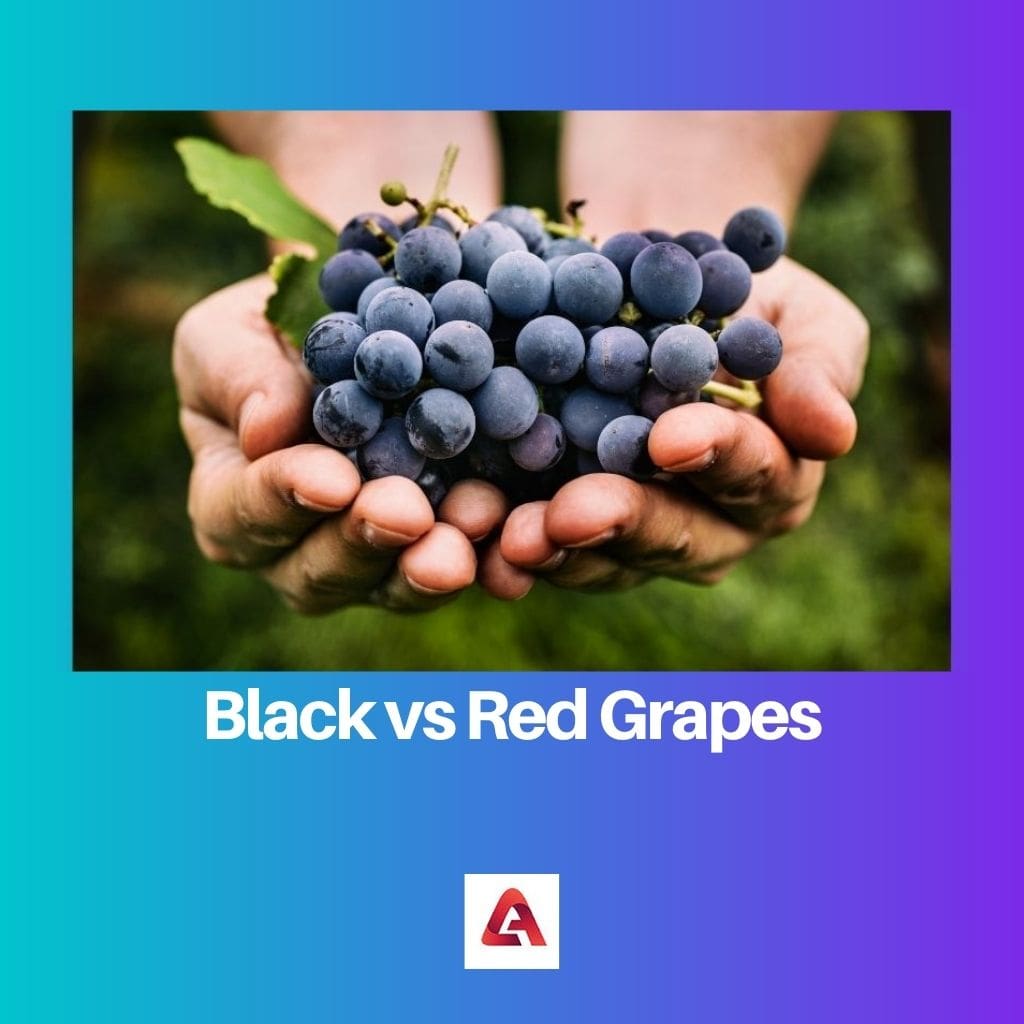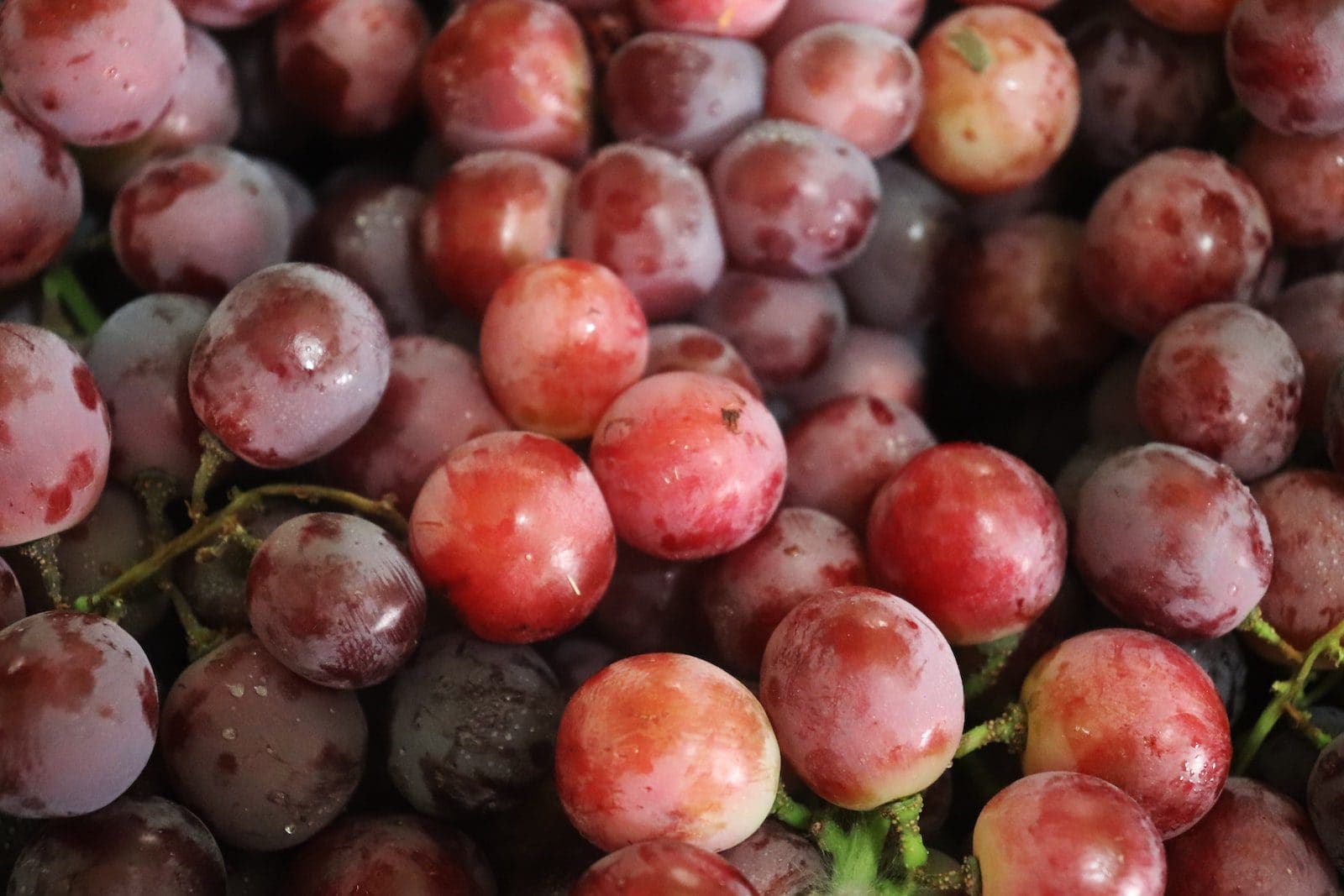Black grapes, such as the popular Concord variety, are known for their deep, rich flavor with notes of jam and spice, making them ideal for robust wines and snacks. Red grapes, like Crimson Seedless, offer a crisp texture and a sweeter taste profile, favored for fresh eating and lighter wines, boasting a refreshing juiciness with hints of floral and berry undertones.
Key Takeaways
- Black grapes have a darker skin color, while red grapes have a lighter, reddish skin color.
- Black grapes are used to make red wine, while red grapes are used to make white wine.
- Black grapes contain higher levels of antioxidants than red grapes, making them healthier.
Black vs. Red Grapes
Black grapes also called red grapes or purple grapes due purplish and blackish skins taste like berries possess sweeter and tangy taste used for fresh juices and eating fresh. Red grapes have lighter red or reddish green hue possessing balanced sweetness and taste used in salads and wine due to slight tangy taste.

Black grapes contain higher nutritional content and are recommended by nutritionists over other kinds of grapes. They have higher levels of flavonoids (an antioxidant compound), polyphenols, etc.
One cup of black grapes contains only 60 calories. Red grapes are sweet and are fermented to form red wine.
They contain the maximum amount of resveratrol as they are more in contact with the skin than other kinds of wine. These grapes are rich in anti-bacterial compounds as they help to maintain a good heart.
Comparison Table
| Feature | Black Grapes | Red Grapes |
|---|---|---|
| Color | Dark purple to almost black | Range from light red to deep purple |
| Anthocyanins | Higher concentration | Lower concentration |
| Antioxidants | Generally higher levels, including resveratrol | Good source of antioxidants, but less than black grapes |
| Taste | Sweeter, richer, sometimes with a hint of tartness | Can be sweet or slightly tangy, depending on variety |
| Uses | Often used for winemaking, raisins, and juice | Primarily for table grapes (eating fresh), but also used for wine and juice |
| Common Varieties | Concord, Pinot Noir, Merlot, Zinfandel | Flame, Crimson Seedless, Globe, Red Seedless |
What are Black Grapes?
Black grapes, also known as dark grapes or purple grapes, are a type of grape distinguished by their deep, dark hue when ripe. They belong to the Vitaceae family and are scientifically classified as Vitis vinifera. Within this broad category, there are numerous cultivars, each with its own unique flavor profile, texture, and intended use.
Characteristics and Flavor Profile
Black grapes exhibit a robust flavor profile characterized by a combination of sweetness and tartness, accompanied by nuanced undertones of jammy richness, spice, and earthiness. The skins of these grapes contain natural pigments called anthocyanins, which contribute to their dark coloration and also provide potential health benefits due to their antioxidant properties.
Culinary Uses and Applications
Black grapes are versatile and find applications in various culinary endeavors, including:
- Fresh Consumption: Black grapes are commonly enjoyed fresh as a nutritious snack, either on their own or as part of fruit salads and cheese platters.
- Winemaking: Many black grape varieties are prized for winemaking, particularly for producing bold and flavorful red wines. Grapes like the Cabernet Sauvignon, Merlot, and Syrah are renowned examples used in crafting esteemed red wines worldwide.
- Cooking and Baking: Their rich flavor makes black grapes a valuable ingredient in cooking and baking, where they can be used in dishes ranging from savory sauces and chutneys to desserts like tarts, pies, and compotes.
| # | Preview | Product | |
|---|---|---|---|
| 1 |

| PRODUCE Black Seedless Grapes, 16 OZ | Check Price on Amazon |
| 2 |

| Dulcinea Farm Black Jam Grapes, 1 Lb | Check Price on Amazon |

What are Red Grapes?
Red grapes, scientifically classified as Vitis vinifera, are a type of grape distinguished by their vibrant red to purplish hue when ripe. They belong to the Vitaceae family and encompass a diverse array of cultivars, each with its own unique flavor profile, texture, and suitability for various culinary and viticultural purposes.
Characteristics and Flavor Profile
Red grapes exhibit a crisp texture and a sweet-tart flavor profile, accompanied by subtle undertones of floral, berry, and citrus notes. The skins of these grapes contain pigments called anthocyanins, which contribute to their red coloration and also provide potential health benefits due to their antioxidant properties.
Culinary Uses and Applications
Red grapes are versatile and find applications in a wide range of culinary endeavors, including:
- Fresh Consumption: Red grapes are commonly enjoyed fresh as a refreshing and nutritious snack, either on their own or as part of fruit salads, charcuterie boards, or paired with cheeses.
- Winemaking: Many red grape varieties are prized for winemaking, particularly for producing light and medium-bodied red wines. Grapes like Pinot Noir, Sangiovese, and Grenache are esteemed examples used in crafting renowned red wines worldwide.
- Cooking and Baking: Red grapes can also be used in cooking and baking, where they add sweetness and complexity to dishes such as roasted meats, salads, sauces, and desserts like tarts, cakes, and compotes.
| # | Preview | Product | |
|---|---|---|---|
| 1 |

| Ocean Spray Red Seedless Grapes, 2 lb | Check Price on Amazon |
| 2 |

| Red Seedless Grapes, 3 Lb | Check Price on Amazon |

Main Differences Between Black Grapes and Red Grapes
- Color:
- Black grapes have a dark purple to black skin color when ripe.
- Red grapes have a red or reddish-purple skin color when ripe.
- Taste:
- Black grapes have a sweeter and more intense flavor compared to red grapes.
- Red grapes may have a slightly tart or tangy flavor, depending on the variety.
- Nutritional Content:
- Black grapes contain antioxidants such as resveratrol, flavonoids, and anthocyanins, which contribute to their dark color and potential health benefits.
- Red grapes also contain antioxidants but may have different levels of specific compounds compared to black grapes.
- Size and Shape:
- Black grapes and red grapes can vary in size and shape depending on the specific variety, growing conditions, and ripeness.
- Common Varieties:
- Common varieties of black grapes include Concord, Black Muscat, and Ribier.
- Common varieties of red grapes include Flame Seedless, Crimson Seedless, and Red Globe.
- Uses:
- Both black and red grapes are commonly eaten fresh as a snack or added to fruit salads, desserts, and cheese platters.
- They are also used to make juices, jams, jellies, wines, and vinegars.


Grapes are an amazing food! Now I understand why they’re so nutritious and recommended by nutritionists!
Yes, it’s so interesting to learn about the differences between black and red grapes and how they’re used. It’s fascinating!
The health benefits of black and red grapes are fascinating. The comparison table is especially helpful in understanding the differences.
Indeed, the details provided about the nutritional values and distinct usages of black and red grapes are incredibly valuable.
I appreciate the scientific breakdown of the nutritional components and usage of black and red grapes. It’s crucial information for making dietary choices.
Grapes are a staple in my diet, and reading about the specific benefits of black grapes reinforces my choice. Thank you for this thorough analysis!
I agree, this article provides valuable insights. The emphasis on nutritional content is particularly helpful.
I’ve always preferred black grapes over red grapes, so I’m glad to see that they’re actually the more nutritious option!
On the other hand, I find red grapes to be much more versatile for use in wine and salads. I believe both types have their unique benefits.
I agree, I wasn’t aware of the nutritional differences between the two types of grapes. This is insightful.
I’ve always enjoyed grapes, but I didn’t fully grasp the extent of their nutritional advantages. This article has been a significant learning experience.
The in-depth nutritional profile of black and red grapes is eye-opening. It’s enlightening to recognize the specific advantages of each type.
The nutritional discussion about black and red grapes is highly educational. It’s compelling to discover their varying health benefits.
This article offers an insightful comparison of black and red grapes, presenting evidence-based details for informed decision-making about grape consumption.
The emphasis on the health benefits of both types of grapes is commendable. It dispels misconceptions and provides substantial knowledge.
The detailed analysis aids in dispelling myths and misconceptions about grape varieties, enhancing the understanding of their nutritional values.
The insights into the nutritional properties of black and red grapes are remarkable. Understanding their differences allows for informed dietary choices.
This comprehensive comparison of black and red grapes is quite enlightening. I’ve learned a lot about their nutritional values and benefits.
I never knew black grapes had fewer calories than red grapes. It’s great to have this information to make healthier choices.
Absolutely, and the fact that they have different antioxidant levels is particularly intriguing.
I always thought red grapes were healthier, but now I realize the advantages of consuming black grapes. Kudos to the detailed breakdown!
This information is eye-opening. It’s amazing how much we can learn about the nutritional properties of different fruits.